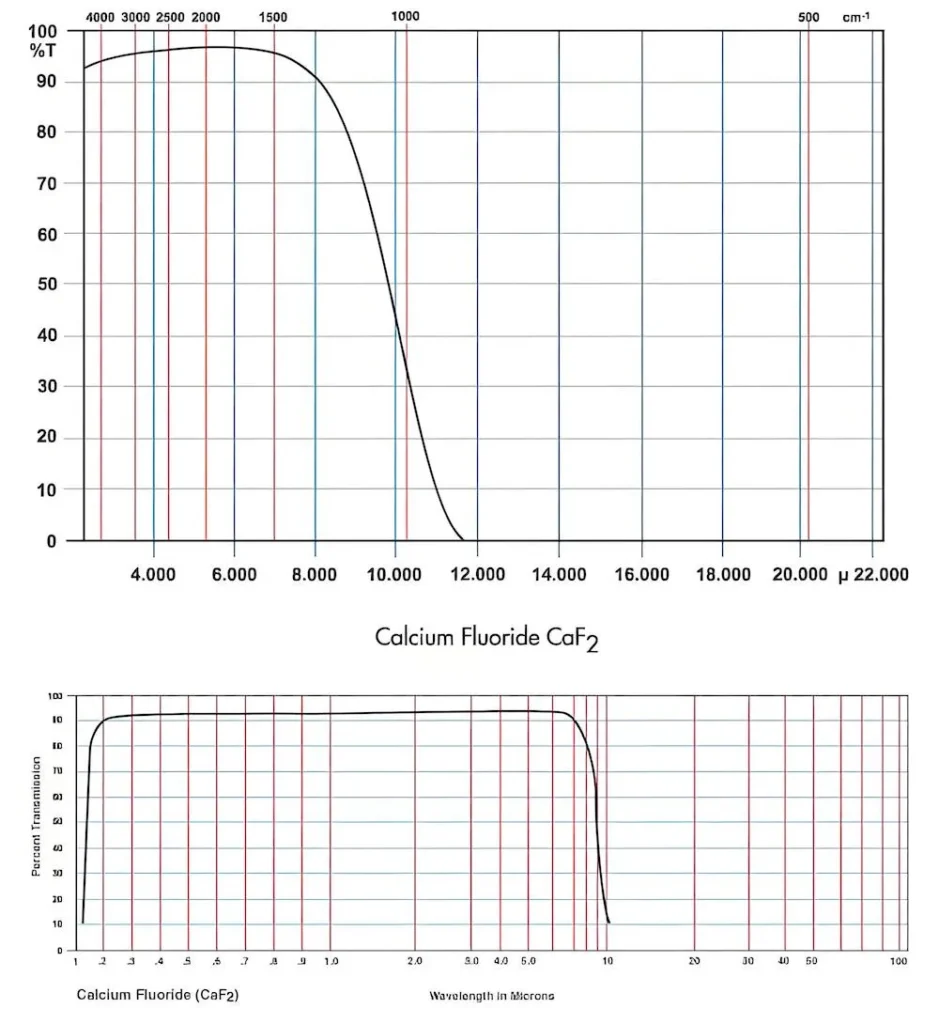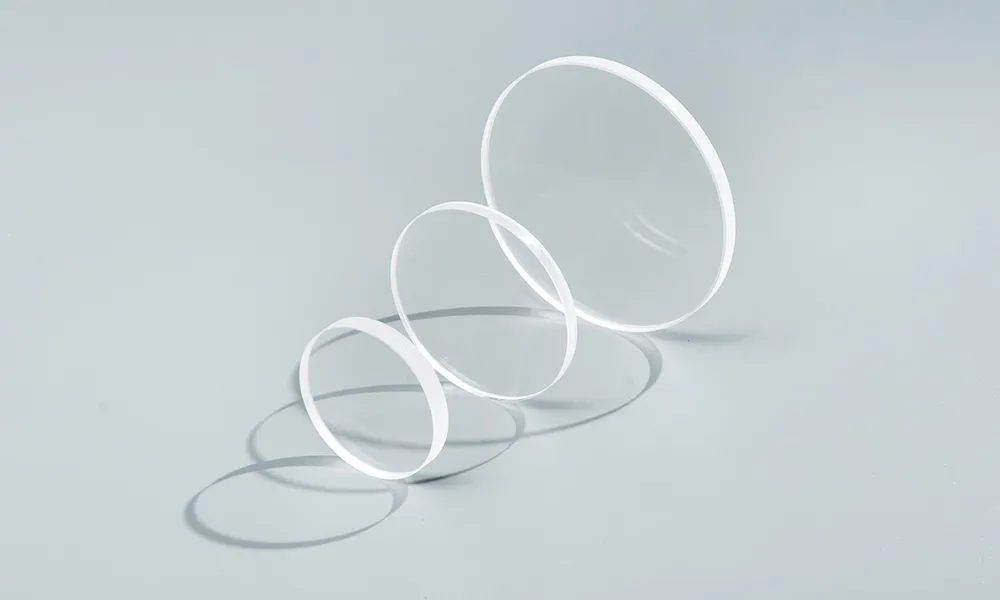Introduction
In the field of optics, material selection is critical to the performance and reliability of devices like lenses, windows, and prisms. Calcium fluoride (CaF2) has become one of the most important optical materials, thanks to its broad wavelength transparency and favorable physical properties. This article explores the key characteristics and applications of CaF2 in the optics industry, its manufacturing processes, and future trends that may shape its use in advanced optical systems.
CaF2 Properties
CaF2 offers a unique set of optical, physical, and chemical properties that make it highly suitable for precision optics, particularly in ultraviolet (UV) and infrared (IR) applications. Below are some of its most notable characteristics:

Optical Properties:
- High transmission across UV to IR spectrum: CaF2 provides excellent transparency across a wide spectral range, from deep UV at 130 nm to IR at 9 µm. This broad transmission range is crucial for applications that rely on both UV and IR, such as in spectroscopy and imaging systems.
- Low refractive index: With a refractive index of around 1.43, CaF2 significantly reduces surface reflection. This makes it ideal for optical components that require minimal reflective losses, such as lenses and optical windows.
- Low chromatic dispersion: CaF2 exhibits minimal dispersion, reducing chromatic aberration in optical systems. This property is particularly useful in high-precision optical systems, including laser optics and telescopic lenses.
Physical Properties:
- Mechanical durability: Although CaF2 is softer than materials like quartz, its durability is sufficient for most optical uses, especially in environments where it may be exposed to laser radiation or mechanical stress.
- Thermal stability: CaF2 has a high melting point of 1,418°C, which supports its use in temperature-sensitive applications, such as in infrared optics for aerospace or industrial thermal imaging systems.
Chemical Properties:
- Chemical resistance: CaF2 is resistant to corrosion from most acids and alkalis, which extends its operational lifespan in harsh conditions.
- Non-hygroscopic nature: Unlike some other optical materials, CaF2 does not absorb moisture, making it highly reliable in humid environments, where moisture absorption could degrade optical performance.
CaF2 Applications in Optics
CaF2’s properties make it ideal for a wide range of optical applications. Here are some of its key uses:
Optical Windows CaF2
CaF2 is often used in UV and IR optical windows, which are critical in spectroscopic devices and remote sensing equipment. Its high transmission in these ranges allows precise measurement and analysis of spectral data.
- Industry example: In the semiconductor industry, CaF2 windows are integral to photolithography systems that produce microchips, where transparency to deep UV is required for accurate patterning.

Optical Lenses CaF2
CaF2 is commonly used in UV lenses and IR lenses for a variety of applications. In UV systems, CaF2’s ability to transmit at short wavelengths makes it ideal for medical diagnostics, while in the IR spectrum, it is used in thermal imaging systems and military applications.
- Industry example: CaF2 lenses are frequently found in high-power laser systems, where the material’s low refractive index and resistance to laser-induced damage allow for precise focusing with minimal distortion.

Optical Prisms CaF2
CaF2 prisms are utilized in optical systems that require minimal chromatic aberration. These prisms are often found in high-precision optical instruments, such as spectrometers and metrology tools.
- Industry example: CaF2 prisms are essential in astronomical telescopes, where low dispersion is necessary to obtain clear, color-corrected images of celestial bodies.

CaF2 Manufacturing
The production of CaF2 optical components is a highly controlled process to ensure the material’s purity and performance. Key steps in its manufacturing include:
Raw Material Processing: CaF2 is first mined and purified to remove impurities. The resulting material must meet high purity standards before it can be used in optical applications.
Crystal Growth: Large, high-quality CaF2 crystals are grown using methods such as the Czochralski process or the Bridgman method. These techniques involve controlled melting and slow cooling to produce a single-crystal structure with minimal defects, ensuring consistent optical performance.
Cutting and Polishing: Once the crystal is grown, it is cut into smaller blanks that are shaped and polished to meet the specific requirements of the optical components being produced. This step requires precise polishing techniques to achieve the high surface quality necessary for lenses, windows, and prisms.
Optional Coatings: Although CaF2 has a naturally low refractive index, anti-reflective coatings may be applied to further enhance its transmission efficiency in specific wavelength ranges. Coatings are especially important in high-performance laser systems or in applications that demand low reflective losses.
Conclusion and Future Trends
CaF2 remains one of the most critical materials in optics, particularly for applications requiring broad-spectrum transmission, low dispersion, and durability in extreme conditions. Its use in advanced optical systems, including laser technology, spectroscopy, and UV lithography, underscores its importance in both commercial and industrial settings.
As technological demands evolve, so will the role of CaF2 in optics. Innovations in nanostructured coatings, enhanced material purity, and manufacturing processes are expected to further improve the performance of CaF2 in high-precision applications. These advancements could make it an even more integral component in next-generation optical systems, from quantum computing to autonomous vehicle sensors.
CaF2’s ability to operate effectively across a wide range of wavelengths, while maintaining high durability and low optical distortion, ensures its continued relevance in future optical technologies. As demand for more advanced, reliable optical components grows, CaF2 will remain a cornerstone material for engineers and scientists developing cutting-edge optical systems.

